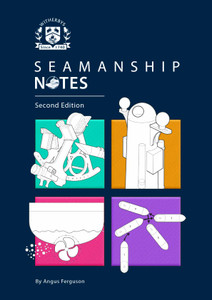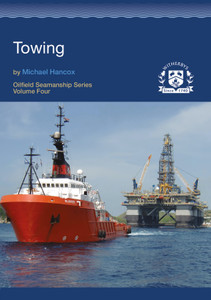
Ships Routeing, 2019 Edition (IH927E)
Both the safety of shipping and the cleanliness of oceans are promoted in many ways, one of which is the continuing development of routeing measures to control the navigation of vessels and to monitor their progress.
The measures that are described or defined in parts A and H of this publication are individually described in parts B (traffic separation schemes and inshore traffic zones), C (deep-water routes), D (areas to be avoided), E (other routeing measures, such as recommended tracks, two-way routes and recommended directions of traffic flow), F (the rules and recommendations on navigation that are associated with particular traffic areas and straits), G (mandatory ship reporting systems, mandatory routeing systems and mandatory no anchoring areas) and H (archipelagic sea lanes).
This edition incorporates routeing measures that have been adopted before July 2019.
The practice of following predetermined routes originated in about 1898 and was adopted, for reasons of safety, by shipping companies operating passenger ships across the North Atlantic. Related provisions were subsequently incorporated into the International Conventions for the Safety of Life at Sea.
The 1960 Safety Convention referred to the same practice in converging areas on both sides of the North Atlantic. The Contracting Governments undertook the responsibility of using their influence to induce the owners of all passenger ships crossing the Atlantic to follow the recognized routes and to do everything in their power to ensure adherence to such routes in converging areas by all ships, so far as circumstances permit.
In 1961 the institutes of navigation of the Federal Republic of Germany, France and the United Kingdom undertook a study of measures for separating traffic in the Strait of Dover and, subsequently, in certain other areas where statistics indicated an increased risk of collision. Their studies resulted in proposals for the separation of traffic in those areas as well as for certain basic principles of ships’ routeing. These proposals were submitted to the International Maritime Organization (IMO), the specialized agency of the United Nations responsible for maritime safety, efficiency of navigation and prevention of marine pollution, and were generally adopted. This initial step was further developed by IMO and the basic concept of separating opposing traffic was applied to many areas throughout the world.
The increase in recent years in the size and draught of ships has produced problems in certain shallow-water areas and led to the establishment of deep-water routes.
Similarly, the hazards to navigation in certain areas and the associated dangers to the marine environment and ecology have resulted in the establishment and adoption of “areas to be avoided” by certain ships.
Today, in accordance with regulation 10.2 of the revised chapter V of the International Convention for the Safety of Life at Sea, 1974 (1974 SOLAS Convention), IMO is recognized as the only international body for establishing and adopting measures on an international level concerning routeing and areas to be avoided by ships or certain classes of ships; whilst, in accordance with regulation 11.2 of the revised chapter V of the International Convention for the Safety of Life at Sea, 1974, IMO is recognized as the only international body for developing guidelines, criteria and regulations on an international level, including adoption of ship reporting systems.
Ships’ Routeing is intended primarily for Administrations responsible for planning and supporting routeing systems for use by international shipping.
There are two categories of routeing systems. The first category of routeing systems includes traffic separation schemes, two-way routes, recommended tracks, areas to be avoided, inshore traffic zones, roundabouts, precautionary areas and deep-water routes. The second category is archipelagic sea lanes. Part A consists of General Provisions on Ships’ Routeing which have been developed to ensure that all adopted routeing systems conform to the same general criteria and principles. Parts B to F include descriptions of routeing systems and associated rules and recommendations on navigation which have been adopted by the Organization. Part G includes descriptions of mandatory ship reporting systems and mandatory routeing measures which have been adopted by the Organization. Part H takes into account the unique character of archipelagic sea lanes as a routeing system and provides guidance for the preparation, consideration and adoption of proposals for the adoption, designation and substitution of archipelagic sea lanes.
Rule 10 of the International Regulations for Preventing Collisions at Sea, 1972 (COLREG 1972), as amended by Assembly resolutions A.464(XII), A.626(15), A.678(16), A.910(22) and A.1004(25), prescribes the conduct of vessels within or near traffic separation schemes adopted by IMO. The text of rule 10 is reproduced in part B.
Through its appropriate bodies, IMO keeps the subject of ships’ routeing under continuous review by adopting new routeing systems and amending or, when necessary, withdrawing existing systems.
A Government intending to establish a new or amended routeing system should be guided by this publication and follow all recommended consultative procedures to ensure that a proposed system will comply with the relevant General Provisions on Ships’ Routeing in part A and with part H.
Proposed routeing measures should be submitted to the Sub-Committee on Navigation, Communications and Search and Rescue at least three months before a scheduled meeting. The Sub-Committee will evaluate a proposal for technical compliance with the General Provisions and make a recommendation regarding its adoption. Submissions should include, in addition to the description of the routeing measure and associated chartlet, the reference chart or charts listed in the description of the routeing measure with the proposed routeing system delineated thereon. Member Governments should also take into account MSC/Circ. 1060 “Guidance notes on the preparation of proposals on ships’ routeing systems and ship reporting systems for submission to the Sub-Committee on Safety of Navigation” and its amendment in MSC.1/Circ.1060/Add.1; for that purpose, the templates downloadable from the IMO website may be useful.
The Maritime Safety Committee will adopt routeing measures in accordance with Assembly resolutions A.572(14), as amended, and A.858(20).
Introduction
SOLAS 1974, as amended, regulation V/10
Part A — General provisions on ships’ routeing
Introduction
1 Objectives
2 Definitions
3 Procedures and responsibilities
4 Methods
5 Planning
6 Design criteria
7 Temporary adjustments and suspensions
8 Use of routeing systems
9 Representation on charts
Part B — Traffic separation schemes and inshore traffic zones
Rule 10 of COLREG 1972, as amended.
Section I – Baltic Sea and adjacent waters
Section II – Western European waters
Section III – Mediterranean Sea and Black Sea
Section
IV
–
Indian
Ocean
and
adjacent
waters
Section
V
–
South-East
Asia
Section VI – Australasia
Section VII – North America, Pacific coast
Section VIII – South America, Pacific coast
Section IX – Western North Atlantic Ocean, Gulf of Mexico and Caribbean Sea
Section X – Asia, Pacific coast
Section XI – Eastern North Atlantic and South Atlantic Oceans
Part C — Deep-water routes
Section I – Baltic Sea and adjacent waters
Section II – Western European waters
Section III – Indian Ocean and adjacent waters, South-East Asia and Australasia
Section IV – Western North Atlantic Ocean, Gulf of Mexico and Caribbean Sea
Part D — Areas to be avoided
Section I – North-western European waters
Section II – North and Central American waters
Section III – Other areas to be avoided
Part E — Other routeing measures
Part F — Associated rules and recommendations on navigation
Part G — Mandatory ship reporting systems, mandatory
Section I – Mandatory ship reporting systems
Section II – Mandatory routeing systems and mandatory no anchoring areas
Part
H
—
Adoption,
designation
and
substitution
of
archipelagic
sea
lanes
Section I – Adopted archipelagic sea lanes
A??s a specialized agency of the United Nations, IMO is the global standard-setting authority for the safety, security and environmental performance of international shipping. Its main role is to create a regulatory framework for the shipping industry that is fair and effective, universally adopted and universally implemented.
In other words, its role is to create a level playing-field so that ship operators cannot address their financial issues by simply cutting corners and compromising on safety, security and environmental performance. This approach also encourages innovation and efficiency.
Shipping is a truly international industry, and it can only operate effectively if the regulations and standards are themselves agreed, adopted and implemented on an international basis. And IMO is the forum at which this process takes place.
- Number of Pages:
- 810
- ISBN:
- 9789280100495
- Published Date:
- October 2019
- Binding Format:
- Hardback
- Book Height:
- 305 mm
- Book Width:
- 218 mm
- Weight:
- 3.1 kg
- Author:
IMO




